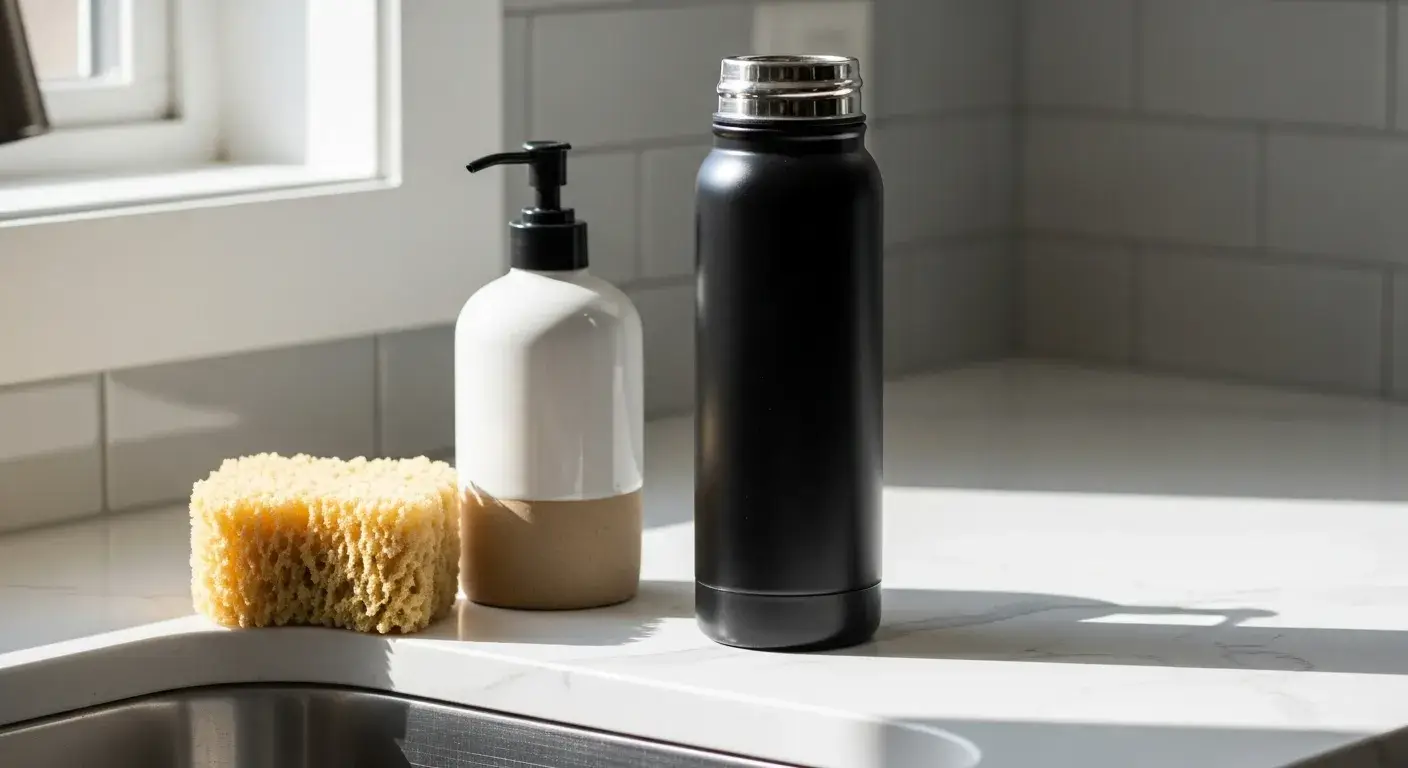
Think water bottles don't need daily washing? Think again. Bacteria builds up fast—especially with repeated use.
Reusable water bottles should be washed daily or after each use to prevent bacteria, mold, and foul odors from forming.
Keep reading to learn how often and how best to clean your bottle, what signs to watch for, and how to stay safe.
How Often Should You Wash Your Reusable Water Bottle?
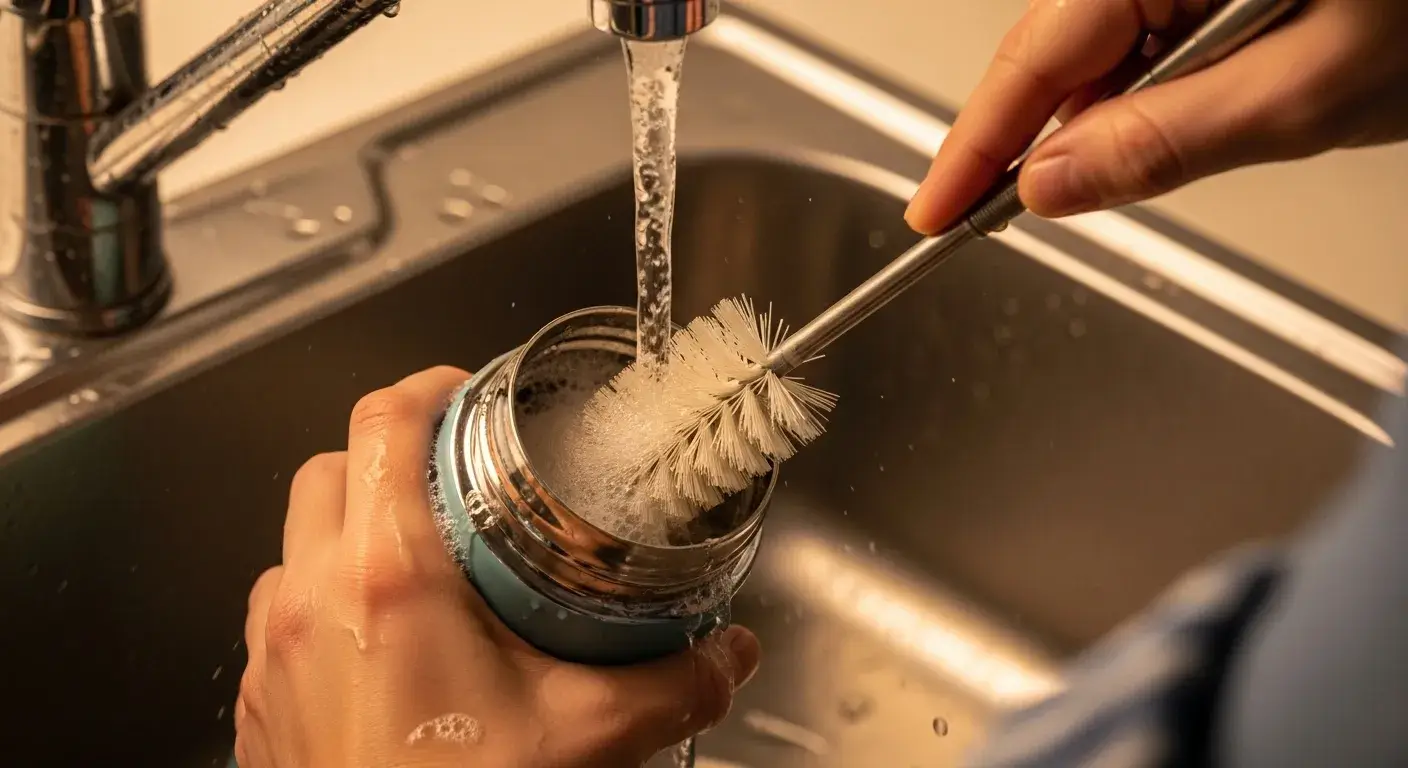
I used to rinse and refill. That wasn't enough. Once I learned the risks, I started washing my bottle every day.
Experts recommend washing your bottle daily or after each use, especially if refilled multiple times.
Why Daily Cleaning Matters
- Bacteria starts growing within hours
- Repeated refills without cleaning = risk of illness
- Residual moisture encourages mold
Skipping cleaning may lead to unexpected odors, slime, or worse—gastrointestinal infections1.
Does the Type of Beverage Affect How Often You Should Clean Your Bottle?
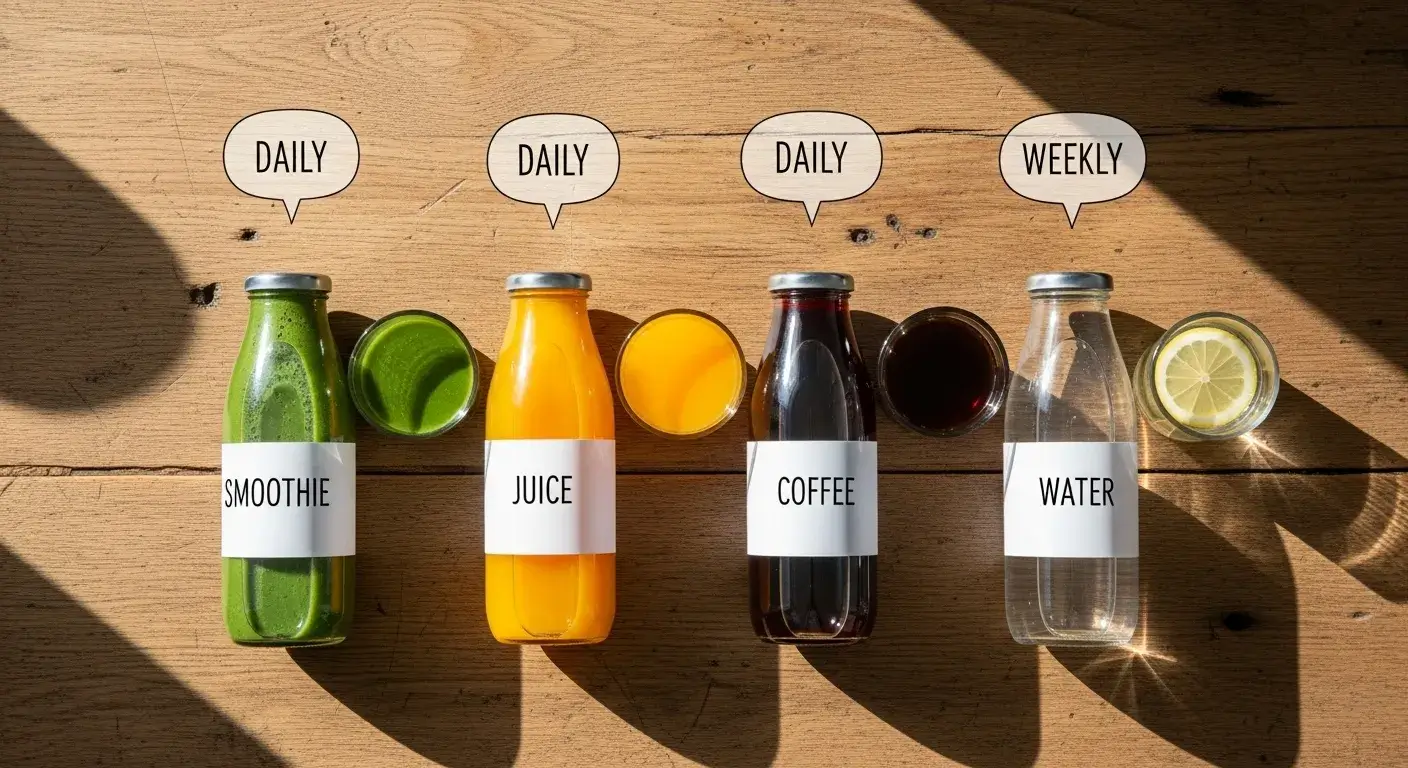
Water might seem harmless, but juice or protein shakes? They turn bottles into bacteria magnets.
Yes—non-water drinks like juice or smoothies promote faster bacterial growth and should prompt immediate cleaning.
Cleaning Frequency by Beverage Type
| Beverage Type | Recommended Cleaning Frequency |
|---|---|
| Plain Water | Daily or after each refill |
| Juice/Sports Drinks | After each use |
| Smoothies/Protein Mix | Immediately after use |
| Tea/Coffee | After each use to prevent stains |
Sugars and residues from flavored drinks feed bacteria2—clean right after drinking.
What Are the Health Risks of Not Washing Your Water Bottle Regularly?
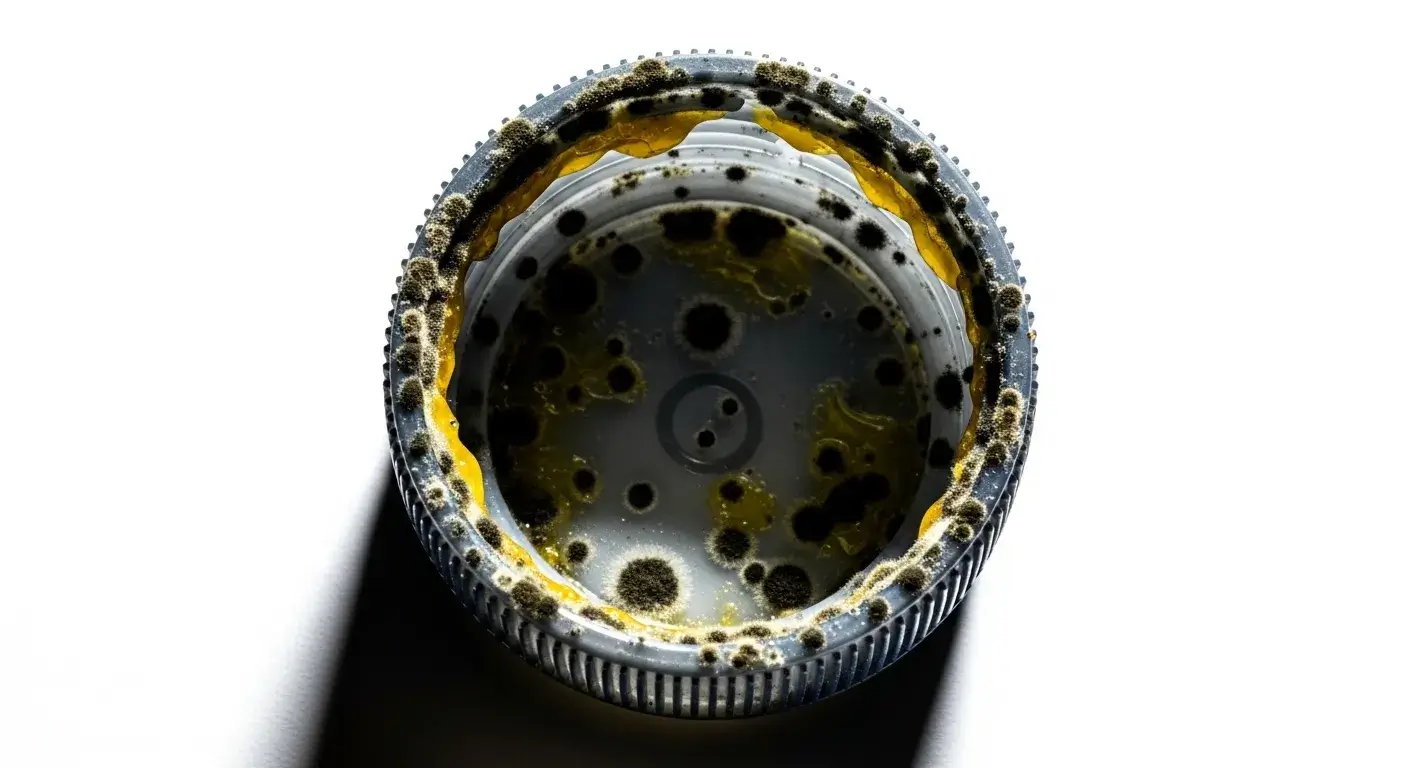
I didn't think much about germs. Until one day my bottle smelled off—and I got sick soon after.
Neglecting to clean your bottle can lead to exposure to harmful bacteria like E. coli, Salmonella, and mold3.
Potential Health Effects
- Gastrointestinal upset (nausea, diarrhea)
- Respiratory infections (if mold is inhaled)
- Skin reactions from contact with grime
Even "just water" can harbor germs if left stagnant in a warm, moist environment.
How Can You Tell When Your Water Bottle Needs Cleaning?

If it smells funky or water tastes weird—it's overdue for a scrub.
Foul odor, slimy feel, and off-tasting water are all signs that your bottle needs immediate cleaning.
Signs to Watch For
- Cloudy water or discoloration inside
- Sticky or greasy feel
- Slime around cap or straw
- Mold spots under lids
Don't wait for these signs—clean before they appear.
What Are the Best Methods for Daily Cleaning of Water Bottles?
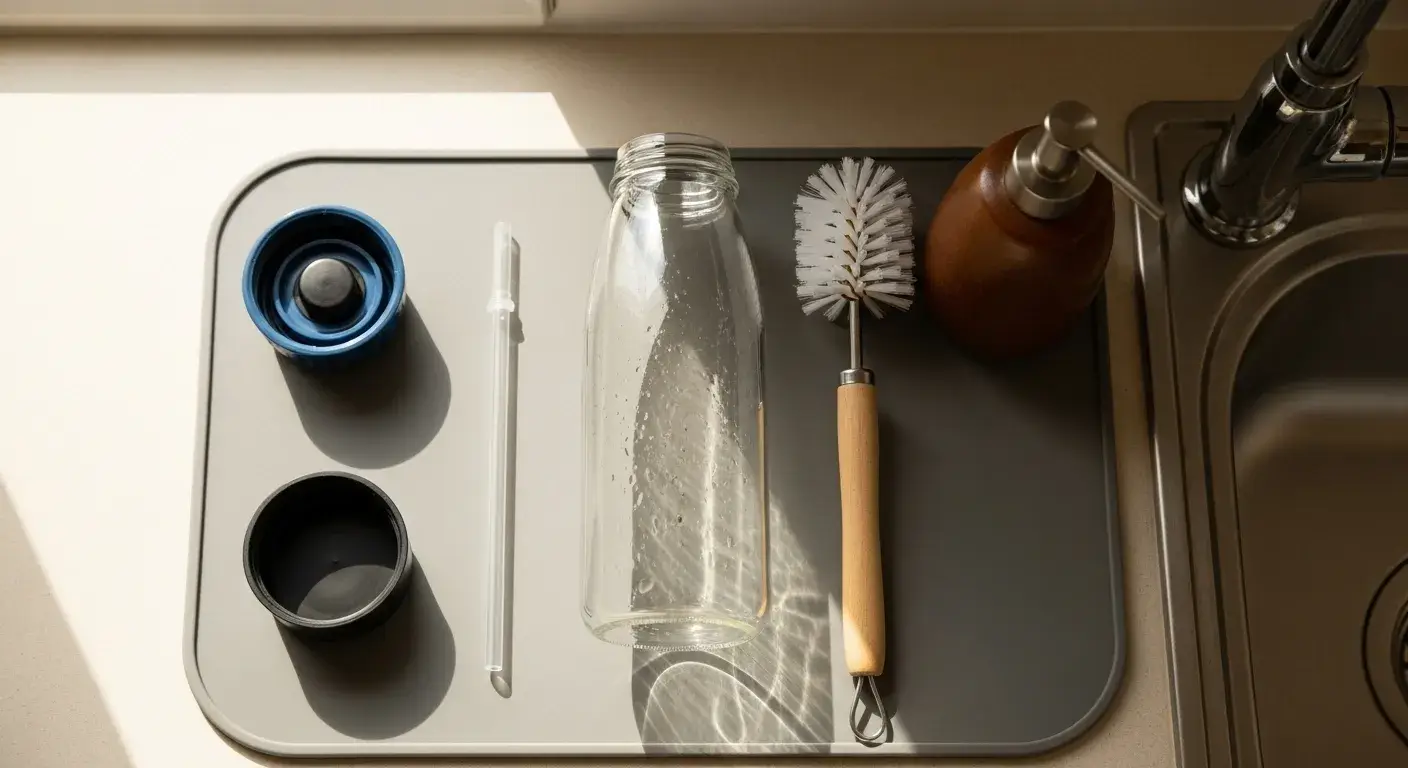
I keep a bottle brush by my sink. A few seconds of effort saves me from slime and smell.
Use hot soapy water and a bottle brush4 to scrub inside, cap, and threads daily. Rinse and dry fully.
Daily Cleaning Routine
- Disassemble cap, straw, and bottle
- Wash each part with warm water and dish soap
- Scrub with bottle and straw brushes
- Rinse thoroughly
- Air dry upside down with lid off
Cleaning only takes a minute and makes a big difference in hygiene.
How Often Should You Deep Clean or Sanitize Your Water Bottle?
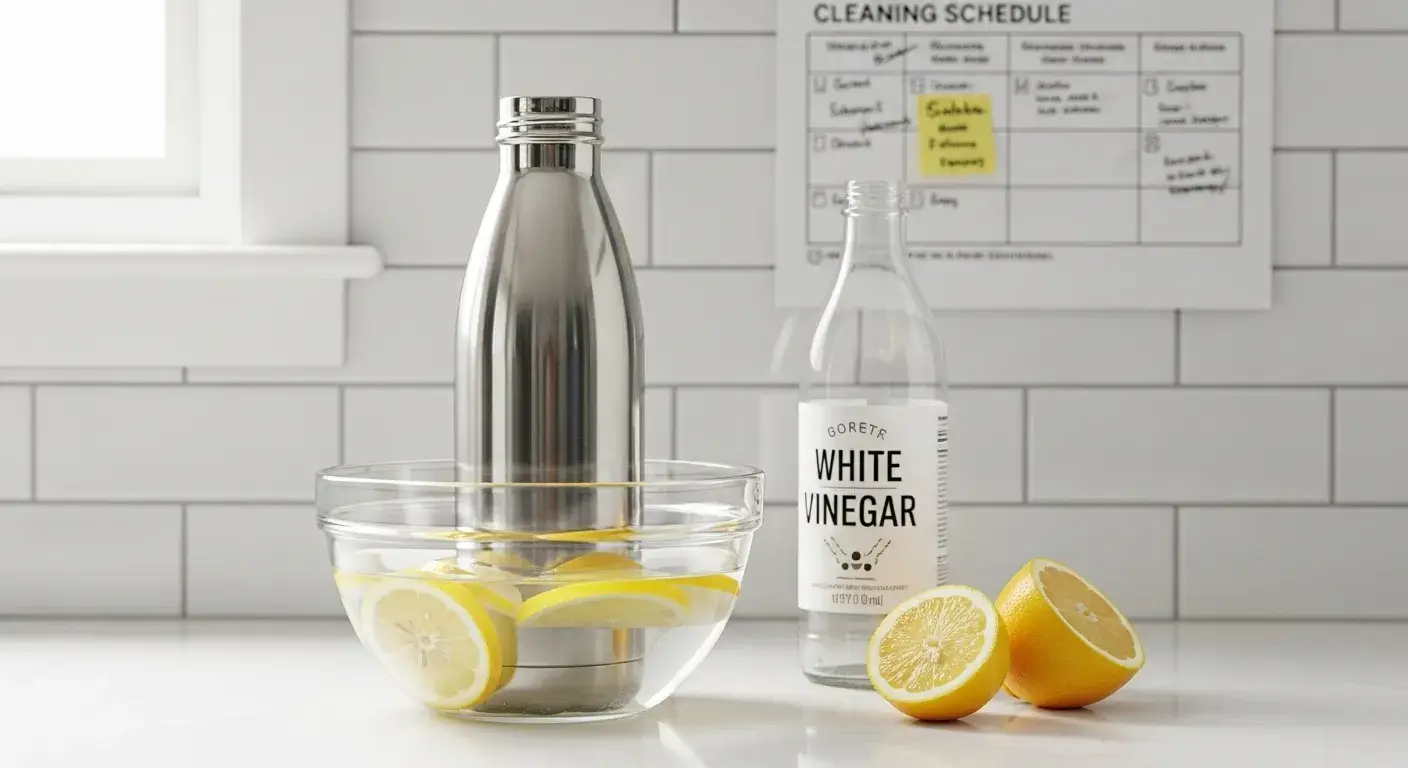
Even clean-looking bottles can host hidden germs. That's why I sanitize mine every weekend.
Deep clean weekly using vinegar, hydrogen peroxide, or diluted bleach5 to kill resistant bacteria and remove build-up.
Sanitizing Options
| Method | Instructions |
|---|---|
| Vinegar Soak | 1:1 white vinegar + water, soak 15–30 minutes |
| Hydrogen Peroxide | 1:1 with water, soak 15 minutes |
| Diluted Bleach | 1 tsp bleach in 1 quart water, soak 5 minutes |
Always rinse thoroughly after sanitizing to avoid chemical taste.
Are Dishwasher and Hand Washing Equally Effective for Water Bottles?
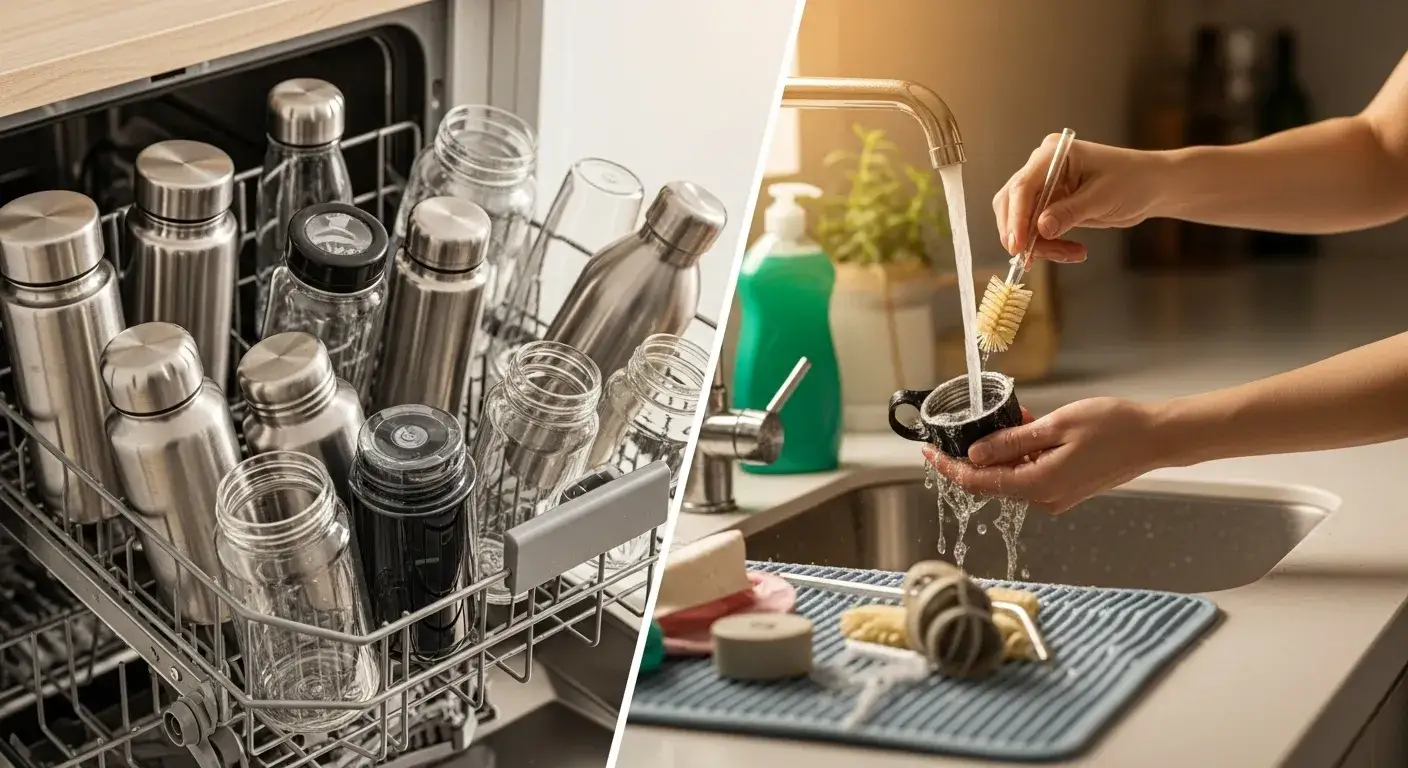
I thought my dishwasher did the job—until I opened a sealed cap full of mold.
Dishwashers are effective6 for dishwasher-safe bottles, but hand washing is better for lids, straws, and seals.
What You Need to Know
- Check bottle's label for dishwasher safety
- Heat and jets help sanitize but may miss tight crevices
- Always hand wash parts with moving valves or gaskets
Use both methods when possible—dishwasher for bottle, hands for lids.
How Should You Clean Water Bottle Caps, Straws, and Lids?

Hidden grime in caps made me queasy. Now, I clean those parts like the bottle itself.
Disassemble caps and lids, then scrub with small brushes. Soak in vinegar or soapy water7 to loosen grime.
Tips for Small Part Cleaning
- Use a toothbrush or straw brush
- Soak stubborn lids in warm vinegar for 10 minutes
- Remove gaskets or seals for deep cleaning
These parts often hide bacteria—clean them with care.
What Cleaning Products Are Safe and Effective for Water Bottles?

I avoid strong chemicals and stick to what's proven: soap, vinegar, and baking soda.
Use antibacterial dish soap, white vinegar, hydrogen peroxide, or bottle-cleaning tablets8 designed for safe sanitization.
Safe Cleaning Options
- Dish soap: Daily washing
- Baking soda: Removes odors and stains
- Vinegar: Natural sanitizer
- Hydrogen peroxide: Disinfects hard-to-reach areas
- Bottle tablets: Convenient for travel or deep clean
Avoid bleach unless diluted correctly. Always rinse well after cleaning.
How Does Usage Frequency Impact Cleaning Recommendations?
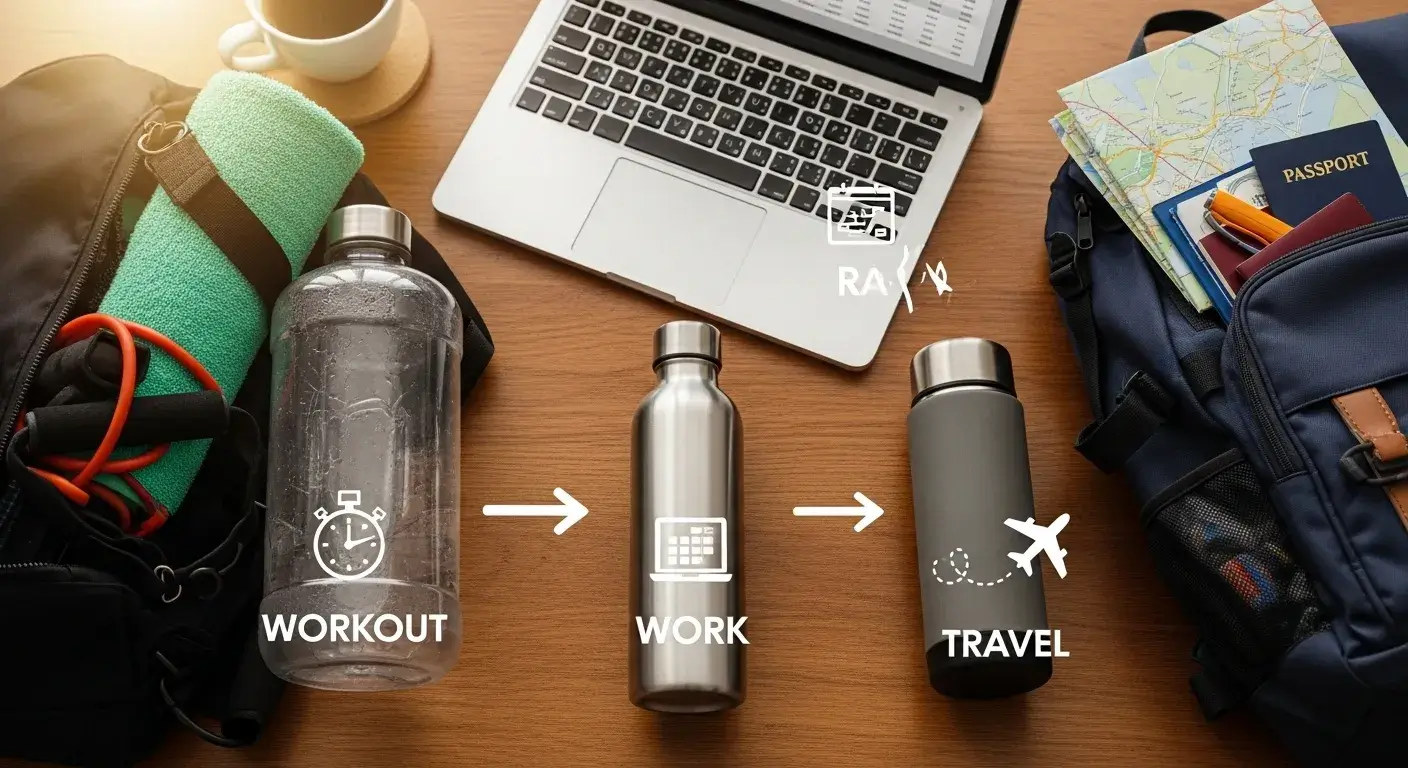
More use means more germs. I clean my gym bottle even more than my work one.
The more often you use and refill your bottle, the more often you should clean it—ideally after every use9.
Cleaning Based on Use
| Usage Type | Cleaning Frequency |
|---|---|
| Occasional (1x/day) | Daily |
| Refilled often | After each refill |
| Used for flavored drinks | After every use |
| Used outdoors or during exercise | Extra attention to sanitizing |
Cleaning should match your habits. High use = high cleaning frequency.
Conclusion
Wash your reusable bottle every day and deep clean weekly to stay healthy, prevent odors, and extend your bottle's life.
Footnotes:
-
Learn from Cleveland Clinic experts about how bacteria in water bottles can cause symptoms similar to food poisoning and other health issues ↩
-
Discover peer-reviewed research showing how sugars and residues in beverages significantly increase bacterial contamination levels in bottles ↩
-
Read scientific studies on the specific pathogens found in reusable bottles and their health risks including gastrointestinal illness ↩
-
Find expert recommendations on the best bottle brushes with flexible necks and durable bristles to effectively clean narrow bottles ↩
-
Get detailed instructions on safe sanitizing methods using household products, with proper dilution ratios and contact times ↩
-
Review CDC guidelines on using dishwashers with hot water and heated drying cycles for effective sanitization of bottles ↩
-
Learn cleaning techniques for hard-to-reach bottle parts and how to remove stubborn buildup from caps, straws, and seals ↩
-
Explore various safe cleaning products and methods for disinfecting water bottles, including natural and commercial options ↩
-
Understand the scientific research showing rapid bacterial growth in reusable bottles, reaching millions of bacteria within 24 hours ↩

